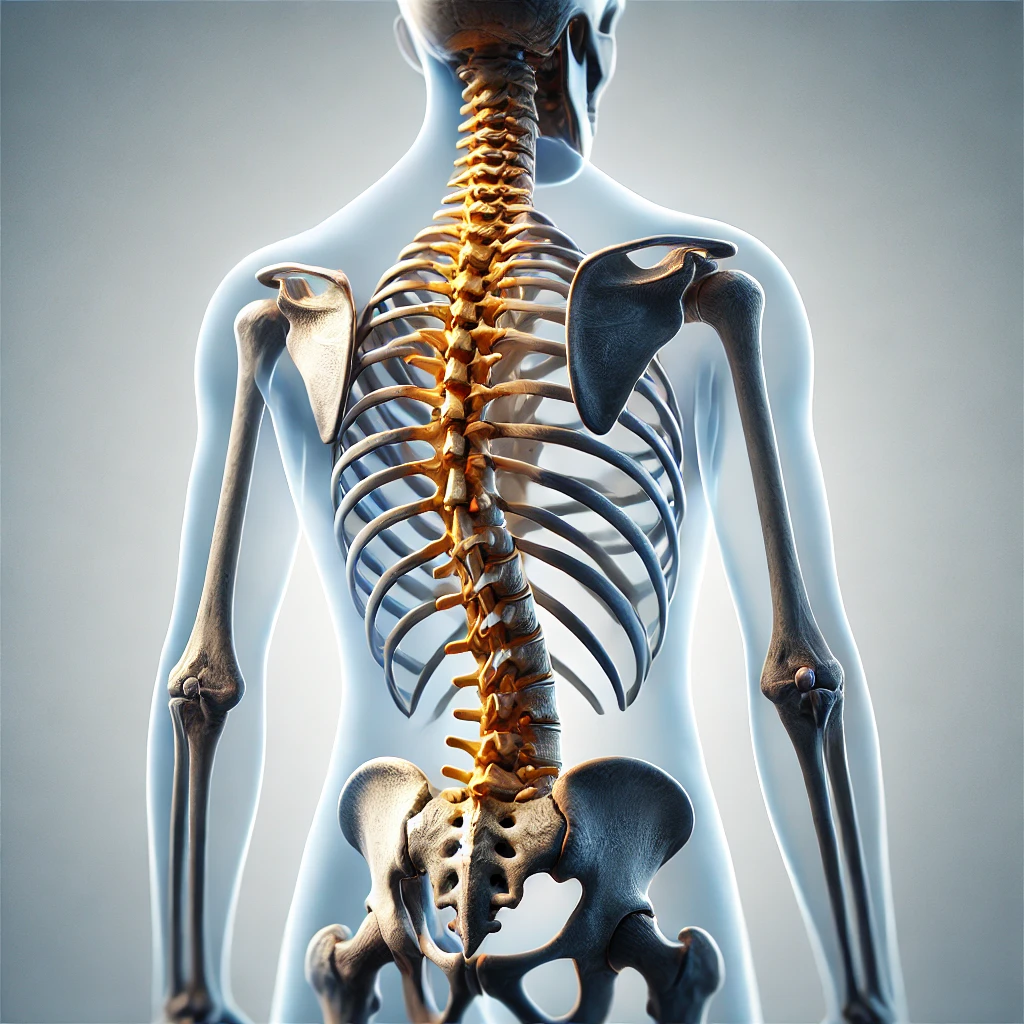
Scoliosis is a complex spinal condition characterized by a sideways curvature of the spine. While it can affect individuals of any age, it is most commonly diagnosed during adolescence. This blog post explores the causes, symptoms, and management strategies for scoliosis, aiming to provide comprehensive insights into this condition.
What is Scoliosis?
Scoliosis involves an abnormal lateral curvature of the spine that can resemble an “S” or “C” shape. It is typically identified when the curvature exceeds 10 degrees. The condition varies in severity, ranging from mild cases requiring minimal intervention to severe cases that may lead to significant health complications such as back pain, respiratory issues, and spinal deformity12.
Types of Scoliosis
- Idiopathic Scoliosis: The most common type, with no identifiable cause. Subtypes include:
- Adolescent Idiopathic Scoliosis (AIS): Occurs between ages 10-18 and is more prevalent in girls.
- Juvenile Idiopathic Scoliosis (JIS): Appears in children aged 3-10.
- Infantile Idiopathic Scoliosis (IIS): Rare and found in infants under 3 years old.
- Congenital Scoliosis: Present at birth due to abnormal spinal development in the womb1.
- Neuromuscular Scoliosis: Secondary to neuromuscular disorders like cerebral palsy or muscular dystrophy.
- Degenerative Scoliosis: Develops in older adults due to spinal degeneration.
- Traumatic Scoliosis: Results from spinal injuries or fractures.
- Syndromic Scoliosis: Associated with genetic syndromes like Marfan syndrome or Ehlers-Danlos syndrome12.
Symptoms and Postural Impacts
While some individuals with scoliosis may remain asymptomatic, others experience noticeable signs:
Physical Symptoms
- Uneven shoulders or hips
- Rib hump due to vertebral rotation
- Forward head posture
- Pelvic tilt affecting gait and balance1.
Postural Challenges
Scoliosis significantly impacts posture. The lateral curvature disrupts spinal alignment, often leading to compensatory movements such as uneven weight distribution while standing or walking. These changes can cause muscle strain and discomfort over time12.
Management Strategies for Scoliosis
Proper management of scoliosis focuses on alleviating symptoms, preventing progression, and improving quality of life. Here are some effective strategies:
Early Intervention
Early diagnosis is crucial for better outcomes. Mild curves often require observation, but proactive measures like physical therapy can prevent worsening3.
Posture Maintenance
Good posture plays a vital role in managing scoliosis:
- Use ergonomic setups for workspaces.
- Practice proper sitting techniques with lumbar support.
- Distribute weight evenly while standing1.
Exercise and Stretching
Targeted exercises strengthen core muscles and improve flexibility:
- Focus on strengthening back muscles and postural stabilizers.
- Activities like yoga and Pilates can enhance spinal alignment13.
Bracing
For growing adolescents with progressive curves, braces are often recommended. They help maintain spinal alignment and prevent further curvature during growth periods1.
Lifestyle Adjustments
Maintaining a healthy lifestyle supports spinal health:
- Use firm mattresses for adequate support.
- Wear comfortable footwear with proper arch support.
- Incorporate regular movement breaks during sedentary activities3.
Surgical Intervention
In severe cases where the curve exceeds 40 degrees or causes significant complications, surgical options like spinal fusion may be considered. Surgery aims to correct the curvature and stabilize the spine2.
Living with Scoliosis
Many individuals with scoliosis lead fulfilling lives by embracing resilience and adapting their routines. Teenagers diagnosed with scoliosis often share inspiring stories of overcoming challenges through determination and support networks2. With advances in treatment options and increased awareness, managing scoliosis has become more effective than ever.
Conclusion
Scoliosis is a multifaceted condition that requires a tailored approach for effective management. From early detection to lifestyle modifications, there are numerous strategies available to minimize its impact on daily life. By understanding its causes, symptoms, and treatments, individuals can take proactive steps toward maintaining spinal health and improving their overall well-being.
Disclaimer: This content is for informational purposes only and is not intended to substitute professional medical advice, diagnosis, or treatment. Always seek the advice of your physician or qualified health provider with any questions you may have regarding a medical condition.
Citations:
- https://optimalchirond.com/scoliosis-and-posture-tips-for-maintaining-a-healthy-spine/
- https://treatingscoliosis.com/blog/embracing-strength-resilience-teen-scoliosis-journeys/
- https://scoliosissystems.com/blog/
- https://clear-institute.org/blog/
- https://www.bostonoandp.com/blog/scoliosis/
- https://www.bracingforscoliosus.org/category/blog-posts-for-parents/
- https://www.scoliosisreductioncenter.com/blog/page/18
- https://www.twistedoutreachproject.com/blog/tag/Scoliosis
